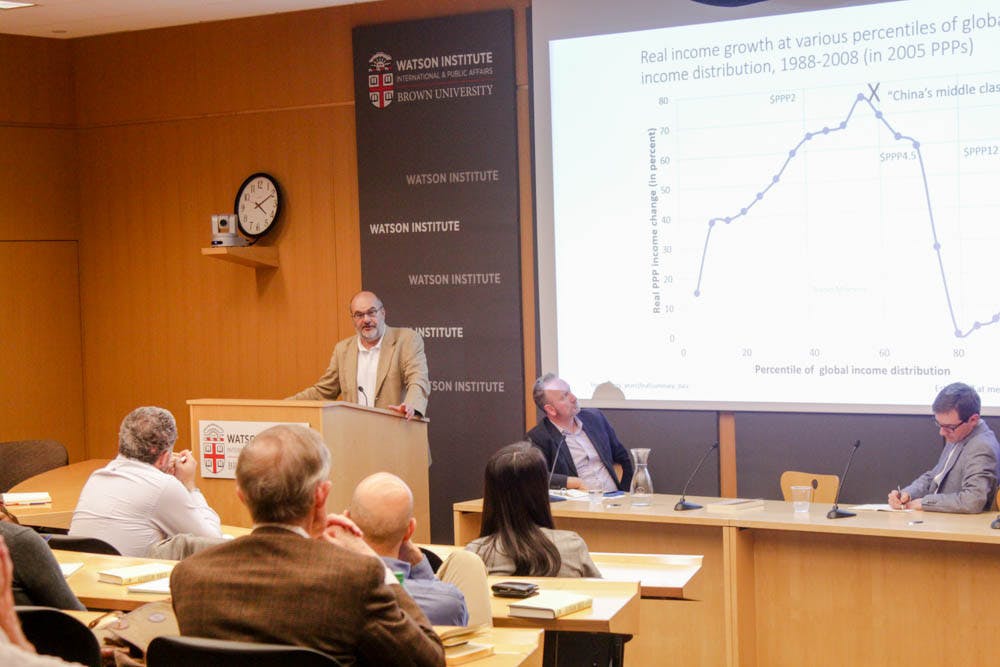Economist Branko Milanovic spoke at the Watson Institute Monday evening about the ideas behind his new book, “Global Inequality: A New Approach for the Age of Globalization.” The intimate, seminar-style lecture was attended by not only undergraduate students but also graduate students, community members and other professionals in the field.
Milanovic’s book addresses ways in which worldwide income inequality patterns have developed from the end of World War II to the present. One of his most notable findings, known as the “Elephant Graph,” compares income percentile to the rate of income change for workers around the world. The graph reveals which groups have benefited and suffered from globalization. For example, the graph depicts the transformation of China’s middle class, stagnant state of the U.S. lower-middle class and slow income growth in many of the world’s leading countries, including the United States, Germany and Japan.
Milanovic also discussed inequality within nations and between nations, as well as key differences between pre-industrial and industrial societies. Rather than economic changes alone, he directs attention to major wars, conquests and epidemics of the modern world to explain many of the prominent economic events that have occurred in recent years.
While the industrial revolution led to increased production, this has not necessarily improved living standards and income levels, Milanovic said. He pointed to tax havens and other forms of concentrated wealth as contributors to this phenomenon. “Domestic maldistribution of income has international consequences,” he said.
Following many of the major financial crises in the past century, including the 2008 recession, economists have changed their outlook to address a more global market and new empirical data. Toward the end of his talk, Milanovic addressed the “hollowing out” of the middle class as a contemporary issue that has manifested as a result of globalization. This issue could prompt a wave of populism or even violence, he added.
The lecture was opened up to a question-and-answer session for the last half hour, allowing the audience to respond to Milanovic’s points, as well as invite new discussions.
Many students who came to the lecture did so out of pure curiosity and did not have any formal background in Milanovic’s findings. “I find the topic fascinating,” said Heesoo Kim ’19. As a democratic socialist, she said she was most interested by the topic of income inequality.
“I very much liked it. It offered a lot of perspectives,” said Aaron Mayer ’18. He added that he appreciated the back-and-forth nature of the lecture, which allowed for free discourse and fruitful conversation.
Mayer said he sees directed policy as a means to correct the problem of concentrated wealth. Pointing to the recent popularity of U.S. Sen. Bernie Sanders, D-VT, as well as common opinions among young people, Mayer said, “It’s really something that’s on people’s minds.”





